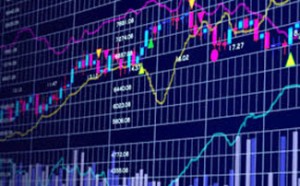Publications
Hedge Funds: An Analytic Perspective
2010 Revised EditionThe hedge fund industry has grown dramatically over the last two decades, with more than eight thousand funds now controlling close to two trillion dollars. Originally intended for the wealthy, these private investments have now attracted a much broader following that includes pension funds and retail investors. Because hedge funds are largely unregulated and shrouded in secrecy, they have developed a mystique and allure that can beguile even the most experienced investor. In Hedge Funds, Andrew Lo--one of the world's most respected financial economists--addresses the pressing need for a systematic framework for managing hedge fund investments.
The Heretics of Finance
2009The Heretics of Finance provides extraordinary insight into both the art of technical analysis and the character of the successful trader. Distinguished MIT professor Andrew W. Lo and researcher Jasmina Hasanhodzic interviewed thirteen highly successful, award-winning market professionals who credit their substantial achievements to technical analysis. The result is the story of technical analysis in the words of the people who know it best; the lively and candid interviews with these gurus of technical analysis.
The first half of the book focuses on the technicians' careers:
- How and why they learned technical analysis
- What market conditions increase their chances of making mistakes
- What their average workday is like
- To what extent trading controls their lives
- Whether they work on their own or with a team
- How their style of technical analysis is unique
The second half concentrates on technical analysis and addresses questions such as these:
- Did the lack of validation by academics ever cause you to doubt technical analysis?
- Can technical analysis be applied to other disciplines?
- How do you prove the validity of the method?
- How has computer software influenced the craft?
- What is the role of luck in technical analysis?
- Are there laws that underlie market action?
- What traits characterize a highly successful trader?
- How you test patterns before you start using them with real money?
Interviewees include:
Ralph J. Acampora, Laszlo Birinyi, Walter Deemer, Paul Desmond, Gail Dudack, Robert J. Farrell, Ian McAvity, John Murphy, Robert Prechter, Linda Raschke, Alan R. Shaw, Anthony Tabell, Stan Weinstein.
Non-Trading Effect
1992The non-trading or non-synchronous effect arises when time series, usually financial asset prices, are taken to be recorded at time intervals of one length when in fact they are recorded at time intervals of another, possibly irregular, lengths. For example, the daily prices of securities quoted in the financial press are usually "closing" prices, prices at which the last transaction in each of those securities occurred on the previous business day. these closing prices generally do not occur at the same time each day, but by calling them "daily" prices, we have implicitly and incorrectly assumes that they are equally spaces at 24-hour intervals. Such an assumption can generate spurious predictability in price changes and returns even if true price changes or returns are statistically independent. The non-trading effect induces potentially serious biases in the moments and co-moments of asset returns such as their means, variances, covariances, and autocorrelation and cross-autocorrelation coefficients.
